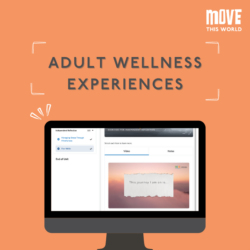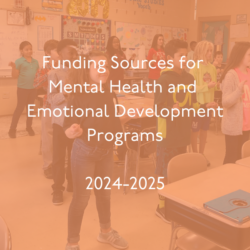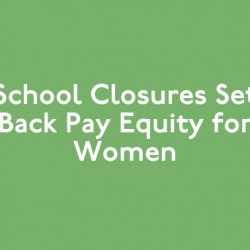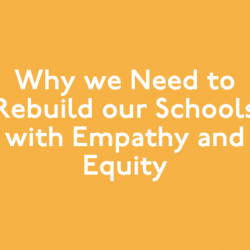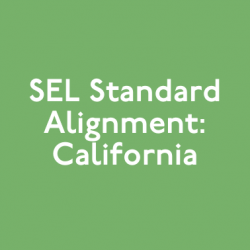According to recent research from Glimpse K12, a whopping 67% of educational software product licenses go unused. That accounts for an estimated $5 billion in funding.
The process to find, approve, and fund high-quality resources for schools is difficult enough, but when those resources go unused everyone loses. Intentionally generating buy-in from all stakeholders can help ensure that resources get in front of students and are used with fidelity.
Social emotional learning, in particular, requires buy-in to be effective. The nature of social emotional learning is not passive, so teachers can’t simply “dial it in.” They need to actively engage with students and stakeholders to best address and support social emotional development. If educators don’t understand the work, how are they going to facilitate it in thoughtful ways day in and day out?
SEL is a community-wide framework, so a thoughtful plan for implementation should educate the entire school community about the relevance and importance of SEL. Additionally, your implementation plan should clearly define expectations, establish a timeline for rollout, and include SEL opportunities for adults.
You can generate buy-in before you even define your SEL goals. By involving various community members in conducting a needs assessment to understand gaps within your district. Community members can also be involved in establishing SEL goals and researching, evaluating, and selecting SEL programs.

Strategies for Establishing Educator Buy-In
1. Build background knowledge
As an education leader, you likely already know about social emotional learning. However, other stakeholders in your school district might not. A great first step is to build background knowledge about SEL community-wide. From coordinating parent nights to sharing news articles about SEL, provide adults in your community with a base of knowledge. Some districts intentionally spend one whole semester or school year providing their staff and families with information about SEL before rolling out any new initiatives. It’s a lot easier to generate buy-in when your community understands what they’re being asked to buy into!
We’ve got a ton of great resources around SEL for you to explore, including some of our favorite SEL podcasts, leading school districts to learn from, and integrating SEL with academics.
2. Set clear expectations
What are the SEL expectations for various stakeholders in your community? Should teachers be following a specific SEL curriculum? Are certain grade teams using a particular program? Are parents expected to be updated regularly on SEL efforts and events? Don’t leave your community guessing. SEL leaders can generate buy-in by clearly defining expectations around social emotional learning initiatives. Check out this presentation from a principals’ meeting in Durham Public Schools that helps set clear expectations for SEL implementation.
3. Explain your why and invite stakeholders to define their why
One of the first things that districts realize after implementing social emotional learning is that it’s not just for students; adults need SEL opportunities, too! Generate buy-in by providing SEL for educators and administrators. Instead of just deciding that SEL is important and adults need to be on board, help your team discover and define their why – why is social emotional learning important to them personally?
You should also have a clear district- or school-wide mission statement around SEL. This will help set expectations and can become a common language that you use to communicate with parents and families about SEL. Belle Plaine Public School District in Minnesota created a mission statement for SEL:
To prepare our students to be successful, young adults, capable of identifying, managing and expressing emotions, with self-confidence, self-motivation and resilience, and to have the ability to problem solve and appropriately manage stress!
4. Provide professional development and ongoing support
Buy-in doesn’t just happen at the beginning of a new initiative. Buy-in should be nurtured all year long, with multiple opportunities for professional development and ongoing support. This could be anything from staff wellness PDs to more explicit SEL training. Read more about the types of professional support you should offer year-round.
5. Respect staff and student voices
Not everyone will have the same ideas or opinions about SEL – and that is okay! Understanding diverse perspectives is a core component of SEL, so creating time and space for staff and student voices to co-create SEL initiatives and goals is critical. By inviting more staff and student voices into SEL planning, you’ll be able to better identify needs and create a plan that serves all of the diverse voices in your community.
Not everyone will be on board with SEL from the beginning, but trying to stifle or “correct” the voices of those who disagree with new initiatives can backfire. There are three generalized rules of teamwork:
-
Agree with the team and commit.
-
Disagree with the team and still decide to commit. [And once you do, you commit!]
-
Disagree with the team and find a new team.
Whether or not students or staff agree with your SEL initiatives, they are part of your community and part of your team. By respecting the opinions of staff and students and providing a space for their voices, you can ensure that your team feels heard and valued.
6. Make it easy
Often, the first question that educators have about new initiatives is “how do we find the time?” or “where does this fit in?” From the program you select to the way you roll out new SEL initiatives, making it easy is essential! Choose solutions that don’t require a heavy lift from classroom teachers or school administrators and design implementation that is straightforward. Teachers and staff will continue to develop their own SEL skills and build confidence as they implement SEL, but the key to getting them started on the journey is to make it easy.
7. Identify your champions
Every school community or district has SEL enthusiasts: educators who get it and are already dedicated to offering more SEL opportunities for students. Celebrate and lift these people up! Identify your SEL champions across different schools, grade teams, departments, and roles. Leverage their excitement to help support other adults throughout the district. Perhaps they can lead PD opportunities for their colleagues or open up their classrooms for observation. Maybe they help you identify SEL solutions or create a committee to design family engagement activities. Find ways to identify SEL champions, highlight their work amongst your community, and invite them to leadership opportunities.
8. Prioritize teacher wellness
The idea of SEL for teachers has been stated in this list already, but it is so critically important that it deserves its own line. Your teachers work hard, and they can’t pour from an empty cup. Reinforce SEL in your community by prioritizing teacher wellness. You can’t expect teachers to support the social and emotional needs of students every single day if their own social and emotional needs are ignored. Teacher wellness can include professional development or workshop opportunities, acts of gratitude or kindness (like a handwritten thank you note or coffee on Friday mornings), or even something as simple as checking in with them – not to discuss lesson plans or student performance, but to truly check in. Simply asking “how are you doing?” and genuinely listening can go a long way.
Generating buy-in for social emotional learning happens year-round, and it’s critical to ensure that students get the best SEL opportunities. Design a plan for cultivating buy-in from all stakeholders across your district to support SEL. If you’d like to learn more
about providing SEL training for your team or if you have questions about SEL implementation, contact our team today.






